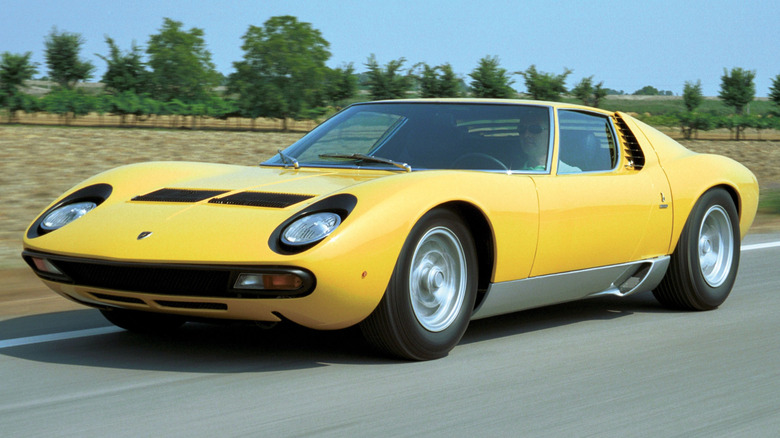
While the '60s saw automakers in America duke it out for supremacy in a war of horsepower, the Clean Air Act of 1970 saw the following decade turn into a very different kind of battle. Automakers' attention turned to meeting increasingly stringent emissions requirements, and thanks to the Oil Crisis, they scrambled to adapt cars with smaller, less gas-guzzling engines to meet the rapidly changing tastes of buyers. High-powered cars also became increasingly unaffordable as insurers dramatically increased
premiums for them. As a result, horsepower figures dipped sharply in America as the decade went on, although, in other parts of the world, carmakers weren't quite as badly hit.
The period between the '70s and early '80s is often referred to as the Malaise Era, but it wasn't all bad news for car buyers. There were still a few scattered bright spots across the car industry where carmakers still managed to find a way to cram plenty of ponies under the hoods of their latest creations, even while adapting to rapidly changing regulations and buyer tastes. These 13 cars are among the most powerful of the '70s and hail from a wide range of American and European manufacturers.
Read more: 5 Of The Highest Horsepower Muscle Cars Of The 1980s
Maserati Bora 4.9 '78 – 330 Horsepower
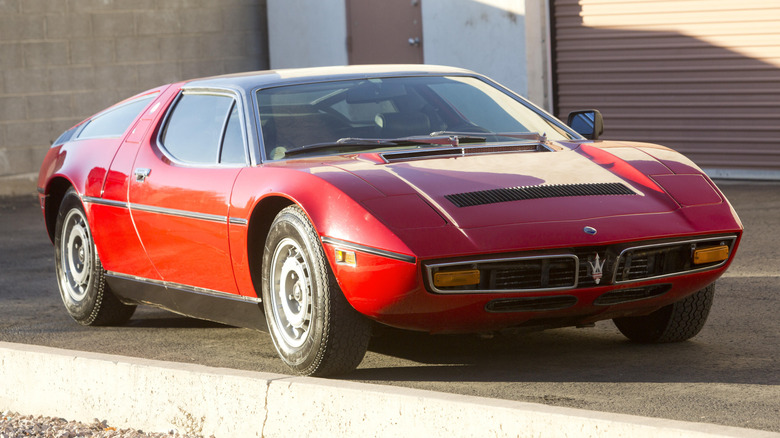
One of a number of wedge-shaped cars designed by Giorgetto Giugiaro during the era, the Maserati Bora first debuted in 1971. Early iterations of the car were fitted with a 4.7L V8 engine that was borrowed from Maserati's race cars, but later models could be optioned with a larger, more powerful 4.9L V8 engine. The 4.9L engine pushed out 330 horsepower, but it was a rare option, with only 250 examples of the Bora leaving the factory with one.
With the 4.9L engine, the Bora could hit a top speed of around 170 mph and boasted a 0-60 mph time of under seven seconds. While Maserati was churning out the high-powered Bora in the late '70s, U.S. regulations had turned the formerly dominating American sports cars into a shadow of their former selves. For comparison, the top-spec 1978 Corvette offered only 220 horsepower despite having a higher horsepower output than the Maserati at the start of the decade. Examples remain sought after among collectors, with the pictured example selling for $132,000 at a Bonhams auction.
De Tomaso Pantera '71 – 330 Horsepower
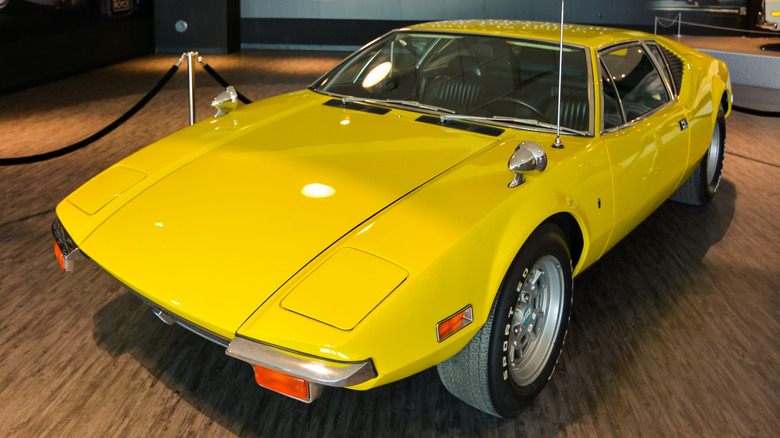
The De Tomaso Pantera is part of a long line of cool European supercars with American engines, although the exact engine they were sold with varied throughout the car's production run. All were V8 engines sourced from Ford, with the early '70s Panteras shipping with a 351 cubic inch Cleveland V8 making 330 horsepower. For several years, Ford imported the Pantera into the States and sold the car via its dealership network. Each car was made at the Carrozzeria Vignale coachworks in Italy.
Ford's deal with De Tomaso only lasted until the middle of the '70s, when the Oil Crisis meant that demand for gas-guzzling supercars quickly dried up. However, the Pantera continued to be made throughout the latter half of the decade, with the brand's focus shifting to other markets. The car eventually evolved into a more luxurious, upmarket model, and production continued in increasingly small numbers until 1992.
AC 428 Frua '71 – 345 Horsepower
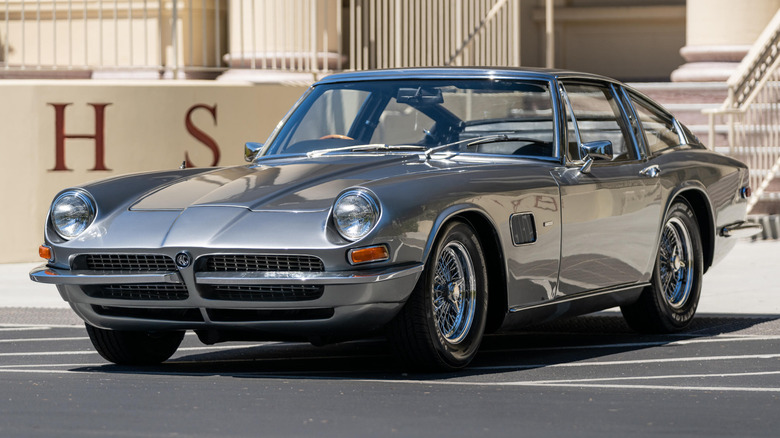
While its sister car, the Cobra, needs no further introduction to any American car enthusiast thanks to its legendary association with Carroll Shelby, the AC 428 Frua is much less well known. It's also far less valuable, with an example selling at Bonhams in 2021 for $173,600. The 428 Frua used an extended version of the Cobra MkIII's chassis and featured bodywork designed and installed by Italian coachbuilder Frua. Under its hood sat a 428 cubic inch Ford V8, which produced 345 horsepower in the 1971 model year car.
The car originally debuted in 1965 and was intended to be a more upmarket, grand touring sibling to the Cobra. It remained in production until 1973, but throughout its lifespan, it remained a very slow seller. Partly, that was down to the car's very steep price, which was higher than an Aston Martin of the same era.
The car was also troubled by production delays because its chassis was constructed in the U.K. before being shipped to Italy for bodywork fitting and then on to its intended country of sale. That shipping process proved unreliable, and so many examples were delivered to customers later than promised. Only 80 examples of the car were made during its entire production run, with around 65 of those estimated to survive today.
Ferrari 365 GTB4 Daytona '73 – 352 Horsepower

Much like the AC 428 Frua, the Ferrari Daytona debuted in the '60s but remained in production until well into the '70s and so warrants inclusion here. The road car debuted in 1968, but by that point, Ferrari had already seen success with the racing version of the car. It swept the entire podium at Daytona in 1967, hence its nickname. Under its hood was a 4.4L Colombo V12 making 352 horsepower, enough to propel the Ferrari to a top speed of around 174 mph.
Aside from its performance, the car's styling was its other defining feature. It was one of the earlier wedge-shaped designs to emerge from Italy and came courtesy of Pininfarina's design studio. It remains among one of Ferrari's most instantly recognizable designs even today. Around 1,400 examples of the car were built before production ended in 1973 when it was replaced with the 365 GT4 Berlinetta Boxer.
Ferrari 512 BB '76 – 355 Horsepower
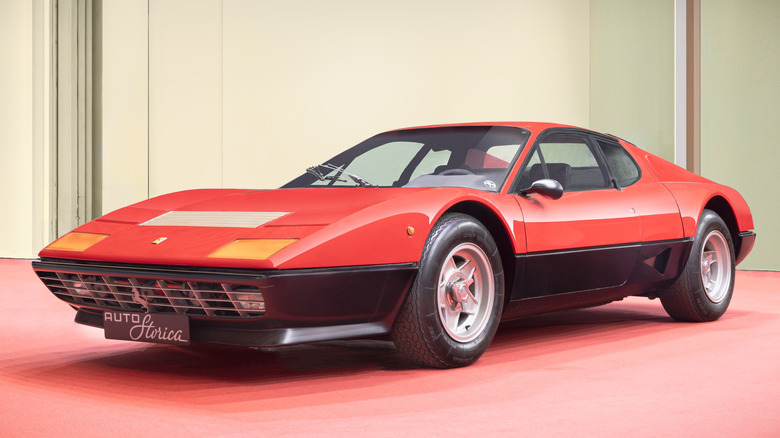
The Daytona wasn't the only high-powered Ferrari of the '70s. The 512 BB that debuted in 1976 was similarly powerful, offering a marginally increased 355 horsepower (or 360 PS) courtesy of its 5.0L V12 engine. That helped it reach a Ferrari-claimed top speed of 188 mph. It remained in production throughout the rest of the decade, being phased out in 1981. Over that time, Ferrari sold 929 examples of the car. Despite the car being available in a variety of markets and in both left-hand drive and right-hand drive configurations, it was never officially offered in America.
A number of examples have appeared at American auctions in the decades since the car became available to import, with values hovering around $200-300,000 depending upon their condition. That's a far cry from the Daytona of the early '70s, which regularly fetches $500,000 or more at auction, and makes the 512 BB arguably one of the more overlooked classic Ferraris of its era.
Pontiac GTO Ram Air IV '70 – 370 Horsepower

Collectors have been willing to pay increasingly large premiums for the rarest muscle cars in recent years, with the convertible Pontiac GTO Ram Air IV '70 that appeared at a Mecum auction in 2023 being a prime example. It sold for a whopping $1.1 million, setting a record for the model in the process. Officially, the Ram Air IV -- the ultimate iteration of the Ram Air series -- was only marginally more powerful than its predecessor. However, it's commonly accepted that the car's official 370 horsepower was extremely conservative, with the real figure being far higher.
The engine was the pinnacle of the GTO range in 1970, but it was very pricey as a result. Only a handful of convertible GTO Judge examples were built, hence the auction car's eye-watering price, but even less rare coupe versions of the car sell for hundreds of thousands of dollars at auction. Unfortunately, the increasingly high prices for the car only increase the chance that surviving examples will be stuffed away in climate-controlled garages, far out of sight from enthusiasts at car shows and meets.
Ford Mustang Boss 429 '70 – 375 Horsepower
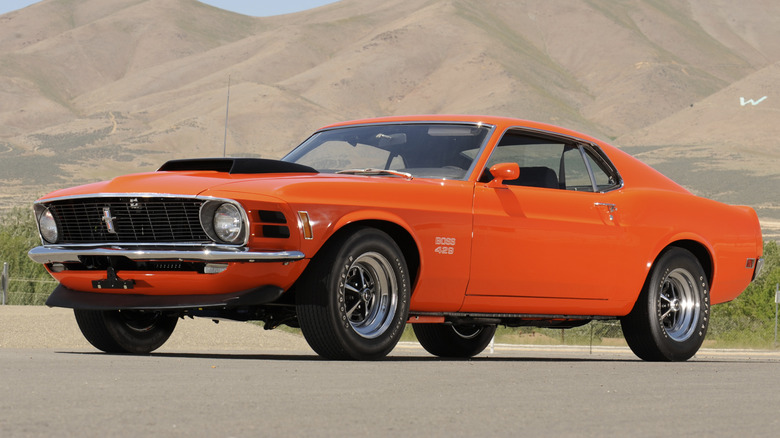
The Ford Mustang Boss 429 is a revered name in the muscle car collecting world for a reason. It was offered for the 1969 and 1970 model years, with the 1970 model year seeing a revised front-end design but keeping its 375 horsepower 429 V8 engine. That official horsepower figure, like many muscle cars of the era, is widely thought to be significantly lower than the real-world output.
There are several potential reasons that cars like the Mustang Boss 429 sported underreported horsepower ratings from the factory. Some claim the practice helped qualify cars for better racing classes, while others report that artificially altering horsepower was a way for some design teams to get around manufacturers' internal rules regarding power-to-weight ratios.
A common theory is also that it was an attempt to appease insurance providers, who were increasing premiums substantially for high-powered cars by the end of the '60s. The true real-world horsepower output of many of the fastest muscle cars is still subject to discussion, but in the case of the Mustang Boss 429, it was likely far higher than the official number.
Lamborghini Countach LP400 '74 – 375 Horsepower
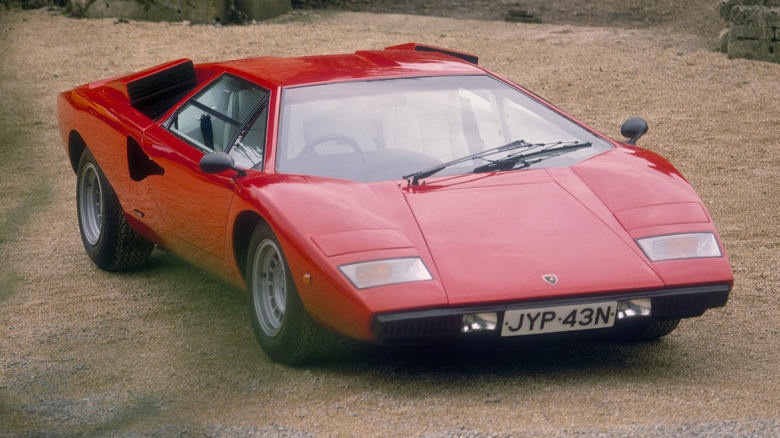
A new version of the iconic Lamborghini Countach was unveiled in 2021, but it arguably didn't match the visual drama of its predecessor. When it launched in 1974, the Countach looked more extreme than virtually every other car on the market, with its wedge shape and unique scissor doors. The car's 4.0L V12 engine produced a reported 375 horsepower and could reach close to 180 mph. The original iteration of the car remained in production until 1978 when it was succeeded by the LP400S.
Further revisions followed every few years until 1990 when the model was finally retired. By the end of its production run, the car's engine produced as much as 455 horsepower, but throughout the '70s, its original 375 horsepower output remained unbeaten. A total of 157 examples of the original LP400 were sold, with values for the car today hitting almost a million dollars for examples in good condition.
Aston Martin V8 Vantage '77 – 380 Horsepower
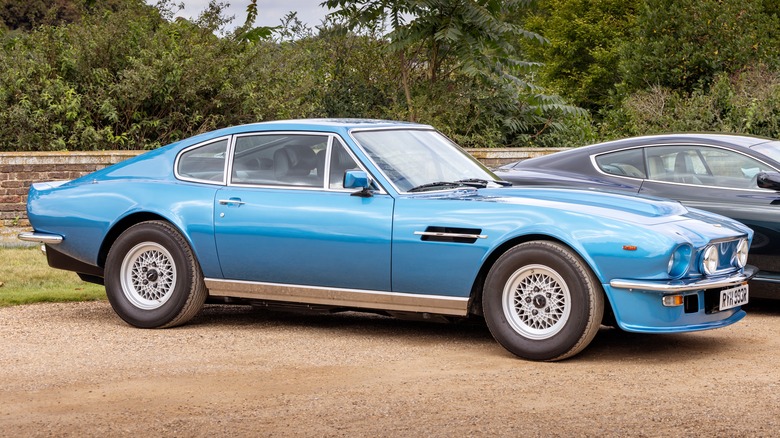
The Aston Martin V8 Vantage is arguably one of the coolest grand touring cars ever built, and that isn't just because it was very powerful. It's certainly part of it, though, with 380 horsepower on offer; Aston Martin notes that it was the fastest four-seater production car in the world at the time of its release in 1977.
That alone is enough to earn it a spot among the greats of its era, but further building the cool factor was the car's exterior styling and plush interior. Not only was this one of the fastest cars on the market, but it was also one of the most comfortable for long cross-continental trips on the autobahn.
With an officially quoted 0-60 mph time of 5.2 seconds, the V8 Vantage didn't hang about off the line either. It was a highly capable car for journeys both short and long, and that helped it gain significant popularity with buyers. In turn, that popularity helped it remain the company's flagship model for over a decade, with the car being finally retired in 1989.
Lamborghini Miura P400 SV '71 – 385 Horsepower
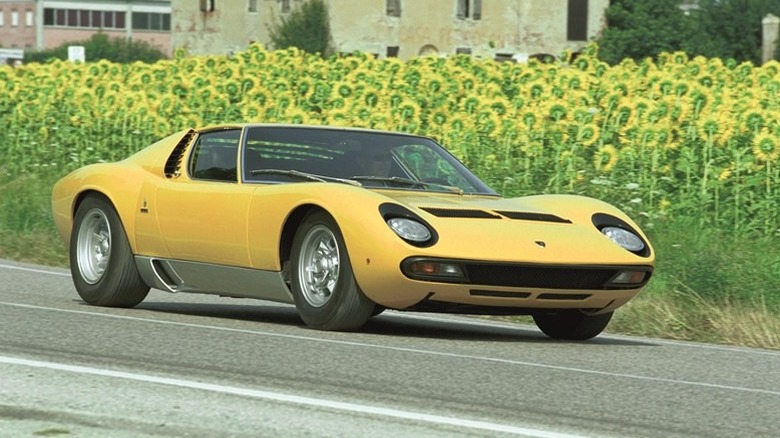
As soon as the original Miura was unveiled in 1965, it proved to be a hit. However, the original vehicle came with a few design limitations, like the fact that the nose could lift at higher speeds. Keen not to rest on its laurels, Lamborghini immediately set about improving the Miura almost as soon as it had launched the car and unveiled the revised P400 S in 1969. Two years later, in 1971, another revised variant, the Miura SV, debuted. As well as changing the design to prevent the nose from lifting as much, the SV also offered a higher horsepower output, 385 horsepower, compared to the 350 horsepower of the initial '60s car.
The Miura's unrivaled looks and segment-defining status have ensured that it has always remained in high demand with well-heeled collectors, with the SV considered to be among the most desirable variants of all. Surviving examples have now usually been meticulously restored at great expense to their owners, with the very first Miura SV being restored in time for the model's 50th anniversary.
Jensen Interceptor SP '71 – 385 Horsepower
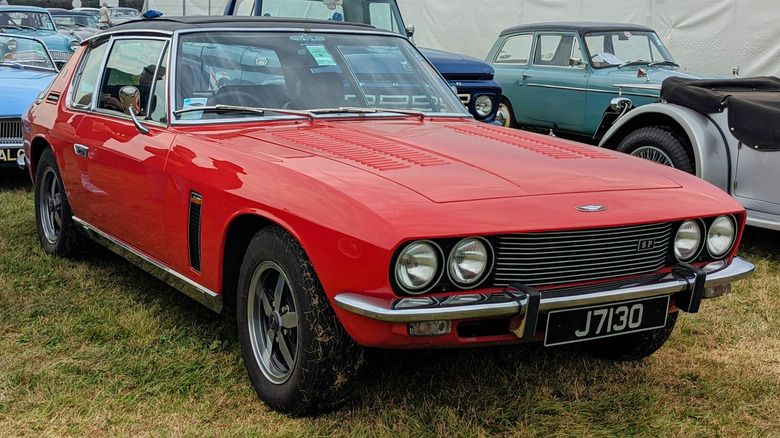
Combining European engineering and design with American power, the '70s Jensen Interceptor remains arguably one of the greatest non-American muscle cars ever built. Jensen had been building models with the Interceptor name since 1949, but it's the '70s Mark III Interceptor that most enthusiasts will remember. It arrived in 1971 and featured a 440 cubic inch Chrysler V8 engine under the hood, which, in its option "Six-Pack" or "SP" configuration, delivered 385 horsepower.
That engine was shared with Chrysler cars, including the Dodge Super Bee and Plymouth Road Runner, but unlike those cars, the Jensen featured Italian styling and English chassis engineering. The Interceptor remained in production for several years after Chrysler stopped offering the engine in its own cars thanks to Jensen's existing inventory of 440 V8 engines, but eventually, that inventory dwindled. Jensen also ended up with cash flow issues, and combined with its engine supply issues, that was enough to see the production of the Interceptor ended in 1976.
Plymouth HEMI 'Cuda '70 – 425 Horsepower
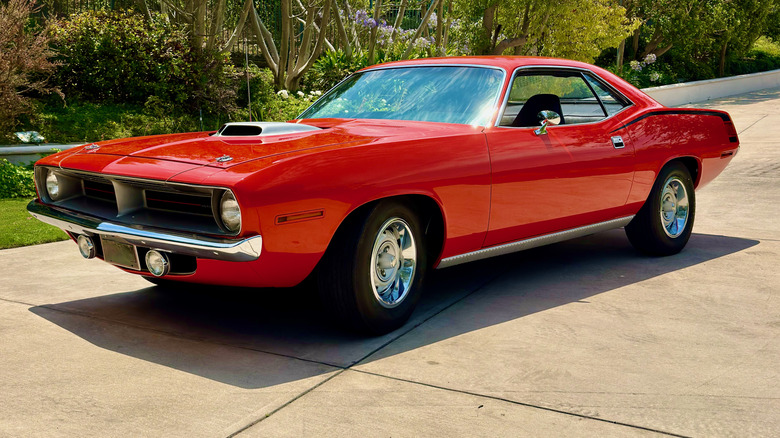
Answering the question of how much horsepower a 1970 Hemi Cuda produces isn't as straightforward as it might seem, as, like many muscle cars of the era, the real number is thought to be significantly higher than the official factory figures. Still, we're ranking cars solely by their officially quoted outputs here, which for the '70 HEMI 'Cuda is 425 horsepower. The Plymouth Superbird of the same era also sported the same official output, but again, its real output was higher.
The 1970 model year was the first Barracuda not to be based on Chrysler's Valiant platform and was instead built on the E-Body alongside the Dodge Challenger. It was also the first model year to launch a high-performance 'Cuda variant, which could be optioned with several engines, culminating in the 425 horsepower 426 HEMI V8 engine. The 'Cuda remained in production through the early '70s, although horsepower figures dropped thanks to new regulations.
Chevrolet Chevelle 454 SS LS6 '70 – 450 Horsepower
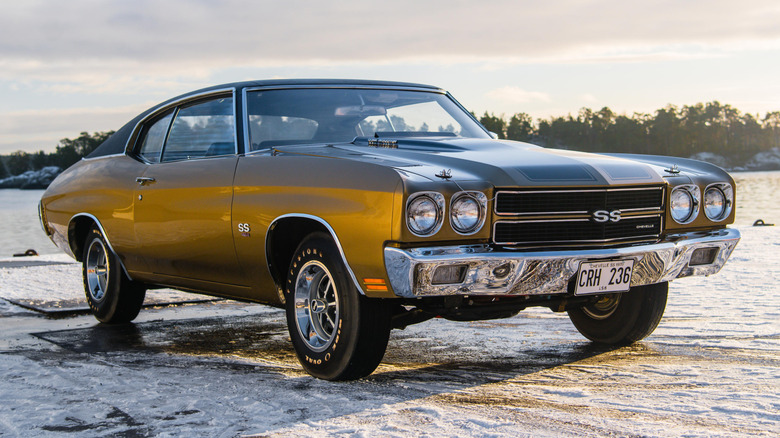
With an officially quoted 450 horsepower on tap, the LS6 engine offered buyers enough cash and enough power to leave virtually any other car in the rearview mirror. It was offered in the Chevrolet Chevelle 454 SS for 1970, as well as in the Corvette for 1971. Despite its all-conquering status, the Chevrolet Chevelle 454 SS LS6 hasn't hit the same price highs as other muscle cars from the era. One example sold at a Bonhams auction in 2019 for just $76,160, although most other examples fetch six-figure sums at auction.
It seems collectors might push prices higher in the future, with a convertible version of the car selling for almost $400,000 in late 2024. Even then, that's a long way short of other rare convertible versions of muscle cars like the Pontiac GTO Ram Air IV listed above. However, it's still high enough that most examples will be likely to sit in air-conditioned garages as showpieces or even simply as investments rather than being taken out on the streets they once dominated.
Methodology

To compile this list of the most powerful cars of the 1970s, we sourced horsepower figures from a mix of auction listings from a mix of manufacturer data, auction listings, and reviews. The horsepower figures listed represent original manufacturer estimates and don't necessarily reflect the real-world output of each engine. In fact, many are known to be deliberate under representations -- muscle car makers, in particular, were known to be conservative with their cars' power outputs for various reasons.
In order to qualify for the list, each car had to have been manufactured in the 1970s. If the car was only made for one model year, that model year had to have been between 1970 and 1979. Cars that were manufactured in 1979 but classed as 1980 model years were excluded. If it was made for multiple model years, the car had to have been made for at least two model years within the decade. This is not intended to be an exhaustive list of every high-powered car but rather serves as a roundup of some of the most notable top-performing models of the era.
Want the latest in tech and auto trends? Subscribe to our free newsletter for the latest headlines, expert guides, and how-to tips, one email at a time.
Read the original article on SlashGear.













